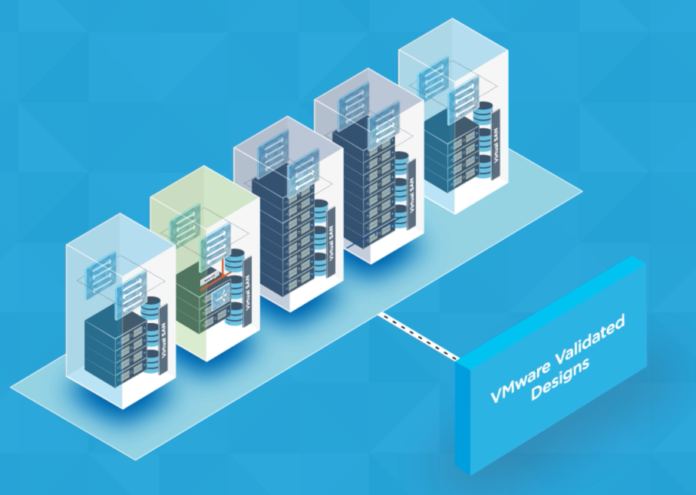VMware refers to the virtualization and cloud computing software that was founded in 1998. With VMware solutions for server virtualization, a hypervisor gets installed on the physical server to allow multiple virtual machines to run.
Each VMware solution has its own operating system, meaning OSes can run on one physical server.
Features of VMware Solutions:
-
Flexible Compute Shapes:
The X7 multi cloud dense instance includes a base frequency of 2.0 GHz and a max turbo of 2.4 GHz. It has up to 768 GB of RAM and 50 GB/sec of network bandwidth.
You can be sure with Secure Boot and the Trusted Platform Module, which provide built-in security against ransomware attacks. This ensures that only valid and authenticated software hardens the firmware security of ESXi instances.
VMware Certified NFSv3 Cloud Datastore is specially designed for disaster recovery and backup use cases. It offers a flexible and secure enterprise-grade secondary storage solution. With Oracle Cloud Infrastructure (OCI) Monitoring and Notifications, users can create defined alarm severity and push notifications to SMS and PagerDuty.
-
Integrated Solutions:
VMware vSphere Replication enables disaster recovery with policy-based management and ensures fast and highly predictable recovery times.
-
Handle workloads:
The VMware Solution allows customers to move workloads to Oracle Cloud Infrastructure (OCI) without modification. With VMware-based tools and processes, customers can gain scale and agility. With this technology, you can migrate applications without making changes and then leverage OCI’s services.
VMware Solution’s bare metal compute provides customers with 156 cores. The highest CPU core count is available for any VMware-based solution today.
-
VMware vSphere Distributed Switch (VDS):
VDS is a centralized network switch that provides a single point of control for managing network connectivity across multiple hosts in a vSphere environment. It simplifies network configuration, enhances security, and improves network performance for virtual machines.
-
VMware Instant Clone:
Instant Clone technology enables rapid cloning and provisioning of virtual machines. It uses a copy-on-write mechanism to create new VMs from a running VM, resulting in near-instantaneous cloning and deployment, saving time and resources.
-
VMware Site Recovery Manager (SRM):
SRM is a disaster recovery solution that automates the failover and failback processes in virtualized environments. It allows for the replication of VMs and provides centralized management for disaster recovery plans, ensuring business continuity in the event of a disaster.
-
VMware Workstation and Fusion:
VMware Workstation and Fusion are desktop virtualization solutions that allow users to run multiple operating systems and applications on a single machine. They provide a sandboxed environment for development, testing, and running different software configurations without the need for separate physical machines.
-
Network Virtualization:
VMware’s NSX technology provides network virtualization capabilities, allowing organizations to create virtual networks that are decoupled from the physical network infrastructure. This enables greater network agility, security, and isolation, as well as simplified network provisioning and management.
-
Storage Virtualization:
VMware vSAN and Virtual Volumes (VVols) offer storage virtualization features. vSAN aggregates local storage devices across multiple hosts to create a shared storage pool, while VVols provide granular control and management of virtual machine storage at the individual VM level. These technologies simplify storage management, improve performance, and increase scalability.
Dedicated Environments:
It’s a single-tenant solution ideal for customers whose workloads demand isolated infrastructure. VMware virtualization solution avoids resource contention, which is found in competitive and multitenant environments.
This reduces risks with Oracle Cloud’s security-first architecture that uses built-in tenant isolation, zero trust access, and data encryption at rest.
VMware workstations include type 2 hypervisors. Unlike a Type 1 hypervisor, which replaces the underlying OS, a Type 2 hypervisor runs as an application on the desktop OS and lets desktop users run a second OS atop their main (host) OS.
It comes in two versions:
- Workstation Player: It’s a free version that supports a single guest OS.
- Workstation Pro: It supports multiple guest operating systems and integrates with VMware management engines.
Benefits of VMware Solutions:
-
Improves ROI:
VMware enables you to use more of a computer’s resources. Administrators don’t like to run mission-critical applications on a single server OS; if one application crashes, it can make the OS unstable.
One way to eliminate this risk is to use its OS on its dedicated physical server. VMware can run each application in its OS on the same physical server and better use the physical server’s available CPU power.
-
More Efficient:
VMware enables you to run more applications using fewer physical servers smoothly. These servers need less space in your data center and less energy to cool your device.
-
Enhanced Flexibility and Scalability:
VMware solutions offer unparalleled flexibility and scalability, allowing businesses to adapt to changing demands and scale their IT infrastructure effortlessly. With VMware virtualization, organizations can consolidate multiple physical servers into virtual machines, optimizing resource utilization and reducing hardware costs.
Additionally, VMware’s cloud solutions enable businesses to seamlessly extend their on-premises infrastructure to the cloud, providing flexibility in workload placement and enabling rapid scalability to meet evolving business needs. This flexibility and scalability empower businesses to respond quickly to changing market dynamics, drive innovation, and stay ahead of the competition.
-
Improved Resource Utilization and Cost Savings:
By virtualizing IT resources with VMware solutions, business can significantly improve resource utilization and achieve cost savings across their infrastructure. VMware’s virtualization technology allows organizations to run multiple virtual machines on a single physical server, maximizing resource efficiency and reducing the need for additional hardware investments.
Additionally, VMware cloud solutions enable businesses to leverage pay-as-you-go models, optimizing operational expenses and eliminating upfront capital expenditures associated with traditional IT deployments. This improved resource utilization and cost savings enable businesses to allocate resources more efficiently, reinvest savings into strategic initiatives, and achieve a higher return on investment (ROI) from their IT infrastructure.
Conclusion:
VMware virtualization solutions offer a range of benefits, such as efficiency, adaptability, integrated solutions, and so on. By using this technology, companies can adapt to the latest, changing technologies.
With no managed service security implications, access is private and entirely under the customer’s control.






